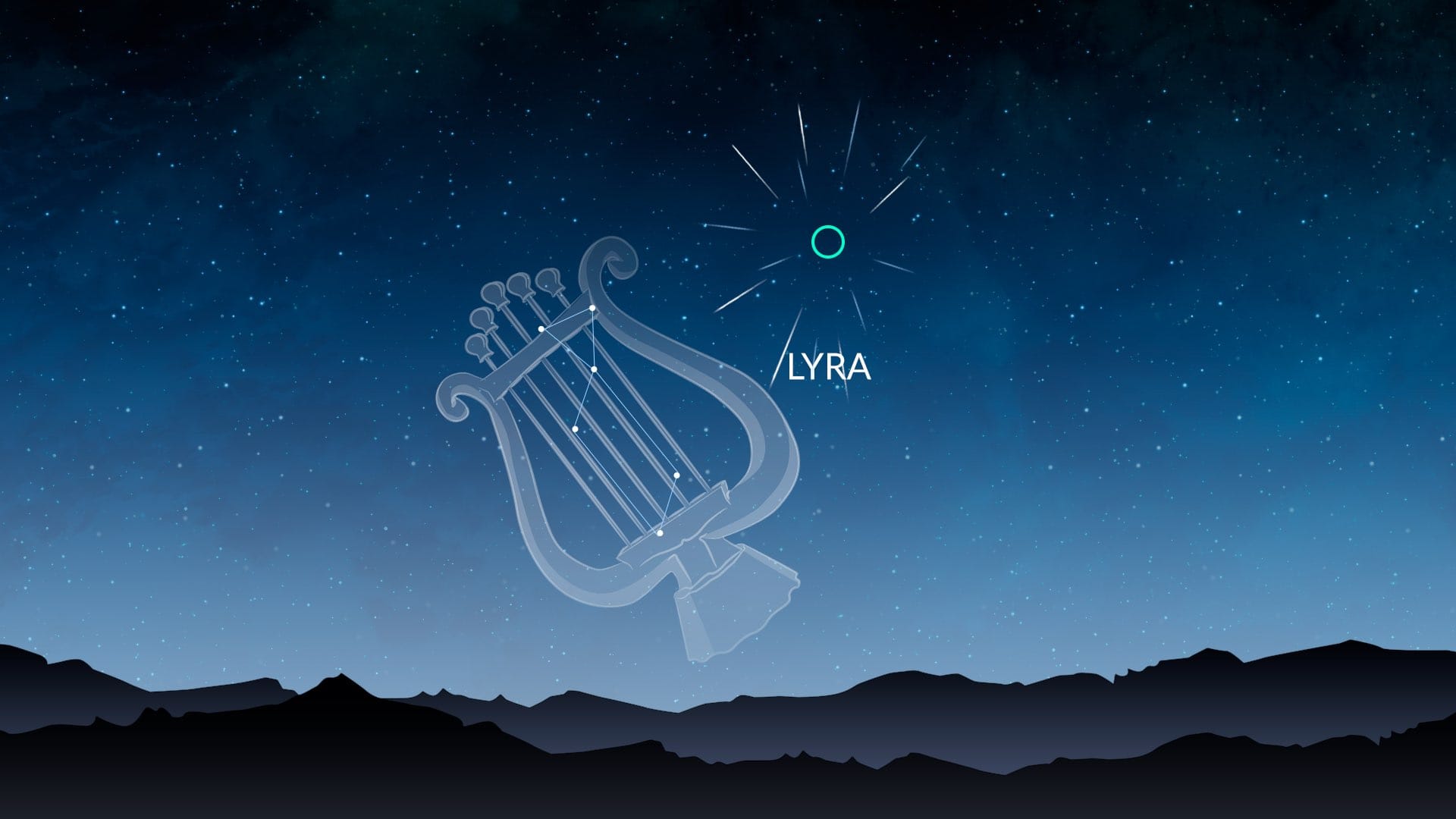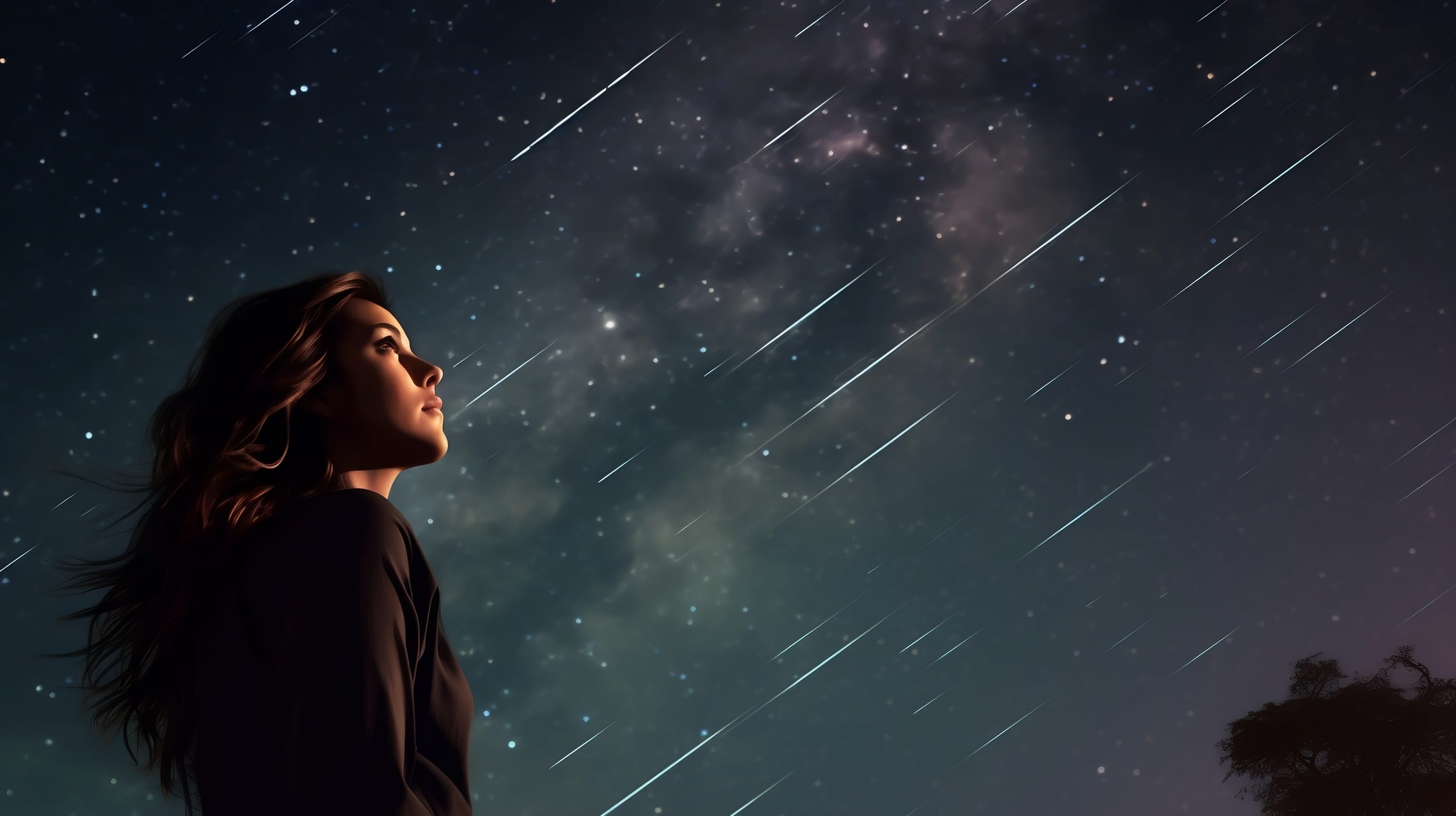Lyrids 2026: April’s Best Meteor Shower
Finally, the annual meteor hiatus is over! The end of the January-April "dry" season is marked by the Lyrids, April’s best-known meteor shower. In 2026, they’ll peak on April 22 under moderately favorable conditions. Use the Sky Tonight app to find out when the Lyrids’ radiant is highest in your sky — that’s when you’ll see the most meteors!
Contents
- Lyrids 2026: When and where to see
- How to see the Lyrid meteor shower 2026?
- What is the Lyrid meteor shower?
- What causes the Lyrid meteor shower?
- The Lyrids 2026: Bottom line
Lyrids 2026: When and where to see
- Active: April 14–30
- Peak of activity: April 22
- Meteors/hour: 18
- Moon illumination: 34%
- Radiant location: Lyra
- Parent body: Comet C/1861 G1 (Thatcher)
- Best visible from: Northern Hemisphere
- Description: The April Lyrids are one of the oldest recorded meteor showers, observed for at least 2,700 years. Usually producing around 18 meteors per hour, they can sometimes surprise observers with brief outbursts reaching up to 90 meteors per hour.
Lyrids 2026: Visibility forecast
In 2026, the Lyrids will peak on the night of April 22 — two days before the First Quarter Moon. This means moonlight will cause only mild interference, allowing decent visibility under dark skies. Observers who can shield the Moon behind a tree, building, or hill will have an even better chance of spotting fainter meteors. You can also try observing during the late-night and pre-dawn hours when the radiant is high in the sky and the Moon is lower or below the horizon.
When to watch the Lyrid meteor shower in 2026?
The Lyrids are expected to reach their maximum activity around 19:40 GMT on April 22, though the exact timing may vary by several hours — possibly between 16:40 GMT on April 22 and 00:00 GMT on April 23.
For the best experience, start observing after 22:30 local time if you’re located in the Northern Hemisphere and well after midnight (typically 01:00–02:00 local time) if you’re in the Southern Hemisphere. By this time, the radiant will already be high enough in the sky for you to see a decent number of meteors.
Note: the peak occurs during daylight for much of the Americas, so the best rates will be seen before dawn on April 22 or after midnight on April 23.
Where can I see the Lyrids?

The Lyrids are visible from both hemispheres, but they favor observers in the Northern Hemisphere. The radiant point of the Lyrids is located in the constellation Lyra, near the bright star Vega — one of the brightest in the night sky. From mid-northern latitudes, the radiant appears above the horizon around 20:30 local time and reaches its highest point in the early morning hours. In the Southern Hemisphere, the radiant rises much later and stays lower in the sky, so the meteor rate will be smaller.
You can easily track the radiant position using the Sky Tonight app: just type “Lyrids” in the search bar, tap the target icon, and follow the arrow on the screen to find the radiant in your sky. Remember: the higher the radiant is in the sky, the more meteors you're likely to see!
Find more meteor shower tips and a quick photography guide in our colorful infographic.

How to see the Lyrid meteor shower 2026?
The Lyrids are active from April 14 to 30 each year, with a peak on April 22. During the peak, observers can see about 18 meteors per hour under perfect viewing conditions. Flying at a velocity of 49 kilometers per second, the Lyrid meteors can produce bright fireballs, though they usually lack persistent trails. Here’s how to improve your chances of seeing the shooting stars:
-
Find the dark, unobstructed sky. Meteors are best seen against the darker backdrop, so it’s best to get away from city lights. Also, they can appear anywhere in the sky (not necessarily near the radiant): the more sky you can see, the better. It's good when the view is not blocked by tall buildings or trees.
-
Adapt to the darkness (at least 15-20 minutes). That way, your eyes will be more sensitive to light and you'll be able to see dimmer meteors. Do not look at bright objects, like a fire or a phone screen, otherwise the desired effect will be lost.
-
Patience pays off. Spend more hours observing to increase your chances. Be ready to give it at least an hour of your time.
-
Get comfortable. Bring a blanket or chair, dress warmly, and pack a thermos with a hot drink to make your stargazing experience more enjoyable.
Remember, stargazing can be challenging, but it's worth the effort! Find even more meteor-hunting tips in our dedicated article.
What is the Lyrid meteor shower?
The Lyrids are one of the oldest known meteor showers: it has been observed for 2,700 years. The first recorded observation of these fast and bright meteors by Chinese skygazers goes back to 687 BC!
Although the April Lyrid meteor shower is not as prolific as the famed August Perseids or the December Geminids, it can amaze observers with as many as 100 meteors per hour: such surges were observed in 1803, 1922, 1945, 1982, and 1985. It’s difficult to predict such outbursts, which are one of the reasons why the Lyrids are worth watching. Unfortunately, no outburst of activity is expected in 2026.
What causes the Lyrid meteor shower?
The constellation Lyra is not the source of the Lyrids; the radiant situated in the constellation only helps observers determine which shower they are watching on a particular night. The parent body of the Lyrid meteor shower is a long-period comet C/1861 G1 (Thatcher) discovered on April 5, 1861, by the amateur astronomer A. E. Thatcher. When our planet passes through the trail left by the comet, the pieces of dust and debris comprising it burn up in the terrestrial atmosphere, producing dazzling lights in the sky.
The Lyrids 2026: Bottom line
In 2026, the Lyrids will peak on April 22 under a 34% illuminated Moon. That means moonlight will cause only slight interference, allowing observers under dark skies to enjoy a good view. You can expect to see around 18 meteors per hour. For the best experience, head outside in the late evening, when the radiant in Lyra climbs high in the sky, and keep the Moon out of your direct line of sight.
Use the Sky Tonight app to check when the radiant is highest above the horizon for your location, and enjoy one of the year’s most classic meteor showers. If you want to see how well-prepared you are for the meteor hunt, take our short and fun quiz!

